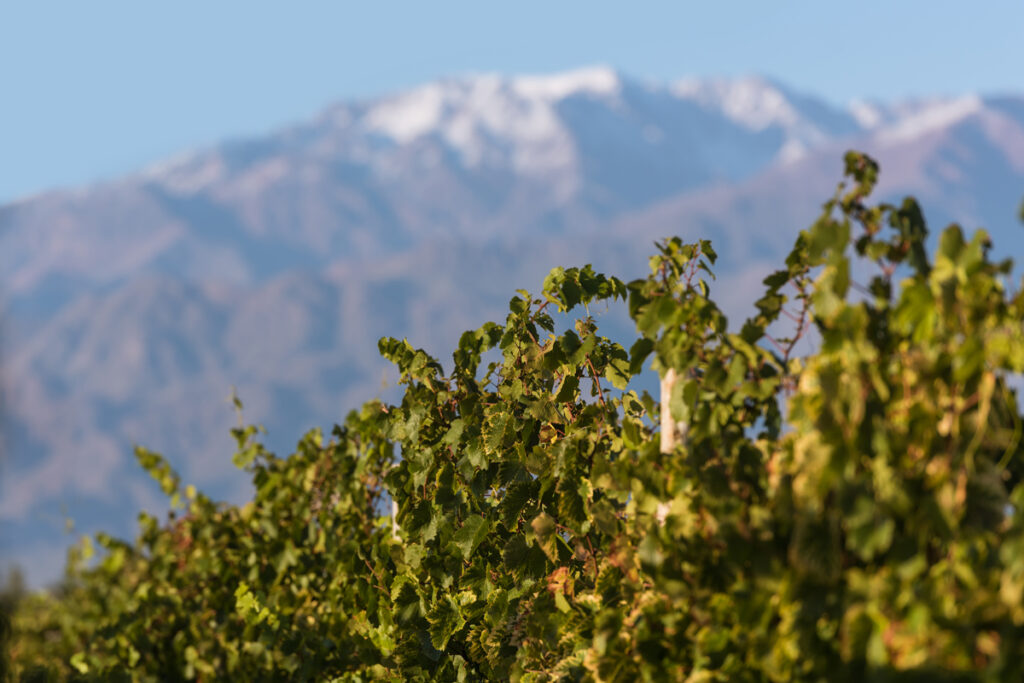The Celebration of Our Wine

As every year, in April we celebrate the grape variety for which we are recognized around the world and thanks to which Argentina is gaining increasing prestige for its wine production.
This variety of French origin arrived in our country thanks to Domingo F. Sarmiento and specifically through Michel Pouget, who was commissioned by the former to introduce new varieties of vitis vinifera to the country and thus boost wine production. To them we owe an important part of our wine identity, and to some extent, its subsequent evolution in both international and domestic markets.
On April 17, 1853, the project for the creation of the Quinta Agronómica, which would be directed by Pouget, was presented to the Legislature of the Province of Mendoza. Hence, that date was chosen to commemorate the flagship variety which, with a magnificent adaptation to our soil, represents Argentine wine all over the world.
Having a recognizable identity helps us to differentiate ourselves, to be distinguishable from others and, in this way, to generate a genuine bond with consumers and wine lovers. Malbec is a noble ambassador of Argentina.
The distinction of Malbec
In our country there are some 46,565 hectares planted with this variety.which makes it the most widespread in our territory. This figure represents 24.3% of the total cultivated area of vines in Argentina and 40.8% of the total number of red varieties in our land.
In general terms, it is characterized by a deep purple or purple color and aromas reminiscent of violets, red fruits and plums. It tends to have medium tannins, fresh acidity and good body with an important presence of fruit also in the mouth.
As if it were connatural to Argentina, it is ideal to combine with typical dishes of our soil: from the most traditional cuts of meat and barbecue, to empanadas and pot dishes such as locro and carbonada.
Malbec in our estates
Mariano Di Paola, Director of Oenology at Rutini Wines, is a great connoisseur of Malbec.is a great connoisseur of Malbec. De acuerdo a él, las sutilezas se muestran en los diferentes terroirs, se expresan en los granos de manera diferenciada y generan así vinos equilibrados y con impronta propia.
In Gualtallary, he says, the variety “acquires spicy aromas of thyme, oregano and jarilla -a native yellow-flowered shrub with a spicy fragrance..
In Altamira, although “the Malbec is fruity, it has a slightly more floral touch, with violets”. And in La Consulta there are clusters of small, compact berries, with good concentration of aromas and flavors.
The enormous vocation of our Director of Enology has also led him to study the differences that occur not only in the different estates but also in the various locations within each one. the differences that occur not only in the different estates but also in the various locations within each one, with a meticulous eye.
In this way, applying technology that is used in other types of crops in order to achieve higher yields, research has been carried out at the level of each plant, in this case to carry out a rigorous selection of the fruit of each one and thus achieve a price-conscious design of our premium wines..
Malbecs to celebrate
This is a blend of Malbecs from different estates: 40% from Gualtallary, 40% from Altamira and 20% from La Consulta. It is aged for 18 months in French oak barrels and has a cellaring potential of 15 years.
It has an intense red color with dazzling violet reflections. The nose is complex, elegant, with very diverse floral and fruity notes and a subtle aniseed. On the palate it is a wine of great concentration and very long finish. Its ample fruitiness and power are complemented by some characteristics of the La Consulta terroir such as licorice. It also has notes of cocoa and coffee, given by the medium toast of the barrel. It is very friendly and rich in its tonality, it is a Gran Malbec.
Aged for 12 months, 20% of the wine is aged in new French oak barrels and 80% in second-use French oak barrels, with a cellaring potential of 10 years, this varietal is a great value. The nose is purplish red, with bluish hues, and has a great aromatic complexity: notes of plums intermingled with spices reminiscent of vanilla, anise, black pepper and a floral background reminiscent of violet blossom. On the palate, the fruity accents are reaffirmed, its enveloping and silky tannins are present but pleasant, highlighting its personality and its great complexity.
Single Vineyard Gualtallary Malbec
Varietal made entirely with grapes from Gualtallary, it has an ageing process of 12 months in French oak barrels (50% of the wine in new barrels and 50% second use) and a cellaring potential of 15 years. It is purple and very lively, with dense garnet reflections. Very aromatic, it surprises for its intense floral (violet) and fruity (cherry, plum, blueberry) notes. It is very voluminous on the palate, where it displays a unique expression of both the Malbec grape variety and the terroir from which it comes. Red fruits and spices (pepper, vanilla) are enhanced by the oak aging, which brings with it the typical accents of bitter cocoa and tobacco. In the aftertaste, a fleeting astringency and the successful acidity promise a long aging potential.
This red wine is made with Malbec grapes from the La Consulta estate. It is aged for 12 months in new French oak barrels (20% of the wine) and the remaining 80% in the same barrels of second use, with a cellaring potential of 10 years. It is Limpid garnet red with violet reflections. On the nose, fruity aromas of plum, floral aromas of violets and a spicy touch of licorice. The palate is typical of the varietal with black fruit flavors, juicy, fresh and with balanced acidity.
Malbec aged 30% of the wine in French oak barrels and 70% in the same barrels of second use, has a cellaring potential of 5 years. It has an intense garnet color with purple hues. It is a typical and well achieved example of Argentina’s emblematic variety. Floral and fruity aromatic notes (plum, cassis, strawberry) can be easily appreciated. The harmonious roundness obtained is due, in part, to the juicy tannins that give it, in addition to smoothness, a long and pleasant finish.



